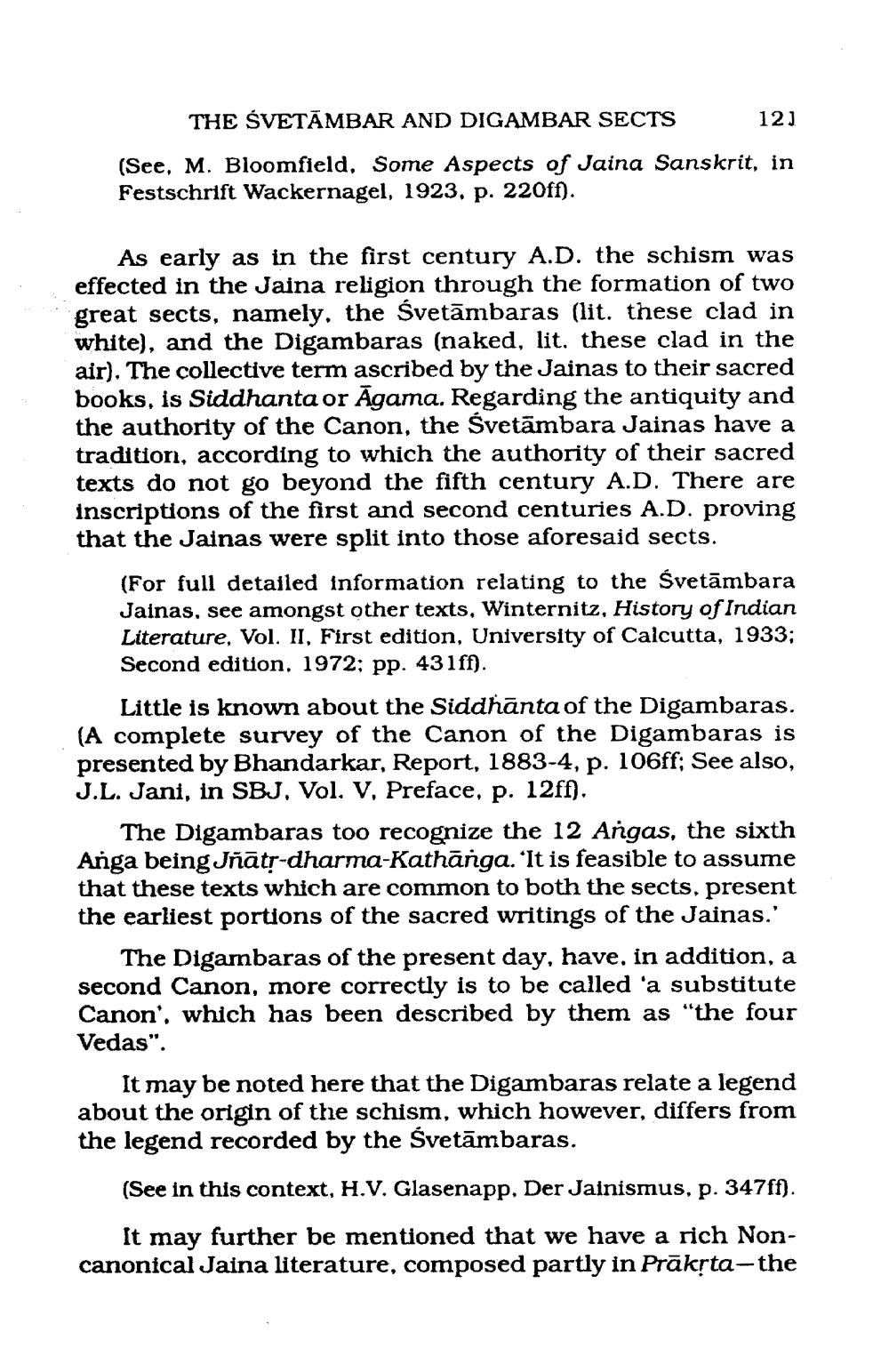________________
THE SVETAMBAR AND DIGAMBAR SECTS
121
(See, M. Bloomfield, Some Aspects of Jaina Sanskrit, in Festschrift Wackernagel, 1923, p. 220ff).
As early as in the first century A.D. the schism was effected in the Jaina religion through the formation of two great sects, namely, the Svetambaras (lit. these clad in white), and the Digambaras (naked, lit. these clad in the air). The collective term ascribed by the Jainas to their sacred books, is Siddhanta or Agama. Regarding the antiquity and the authority of the Canon, the Svetambara Jainas have a tradition, according to which the authority of their sacred texts do not go beyond the fifth century A.D. There are inscriptions of the first and second centuries A.D. proving that the Jainas were split into those aforesaid sects.
(For full detailed information relating to the Svetambara Jainas, see amongst other texts, Winternitz, History of Indian Literature, Vol. II, First edition, University of Calcutta, 1933; Second edition. 1972; pp. 431ff).
Little is known about the Siddhanta of the Digambaras. (A complete survey of the Canon of the Digambaras is presented by Bhandarkar, Report, 1883-4, p. 106ff; See also, J.L. Jani, in SBJ, Vol. V. Preface, p. 12ff).
The Digambaras too recognize the 12 Angas, the sixth Anga being Jñātṛ-dharma-Kathānga. 'It is feasible to assume that these texts which are common to both the sects, present the earliest portions of the sacred writings of the Jainas.'
The Digambaras of the present day, have, in addition, a second Canon, more correctly is to be called 'a substitute Canon', which has been described by them as "the four Vedas".
It may be noted here that the Digambaras relate a legend about the origin of the schism, which however, differs from the legend recorded by the Svetāmbaras.
(See in this context, H.V. Glasenapp, Der Jainismus, p. 347ff).
It may further be mentioned that we have a rich Noncanonical Jaina literature, composed partly in Prākṛta-the




